
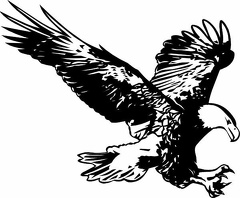 Eagle Hunting
Eagle Hunting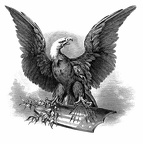 Continental Bank Eagle
Continental Bank Eagle Of Peacocks, Ducks, and other Feathers of changeable colours
Of Peacocks, Ducks, and other Feathers of changeable colours Mother hen with her chicks
Mother hen with her chicks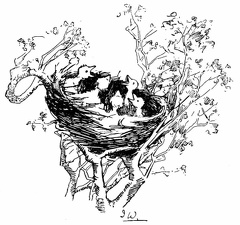 Birds waiting for feeding time
Birds waiting for feeding time Horse and chickens
Horse and chickens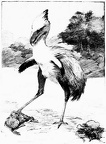 Phororhacos, a Patagonian Giant of the Miocene
Phororhacos, a Patagonian Giant of the Miocene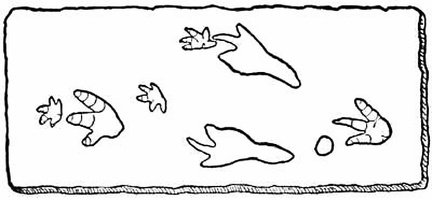 Where a Dinosaur Sat Down
Where a Dinosaur Sat Down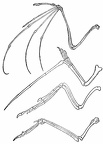 Nature's Four Methods of Making a Wing - Bat, Pteryodactyl, Archæopteryx, and Modern Bird
Nature's Four Methods of Making a Wing - Bat, Pteryodactyl, Archæopteryx, and Modern Bird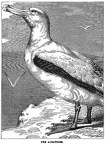 The Albatross
The Albatross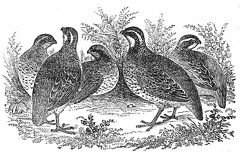 Partridges
Partridges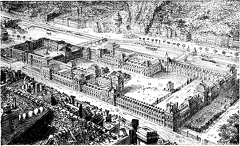 Birds-eye View of the Louvre
Birds-eye View of the Louvre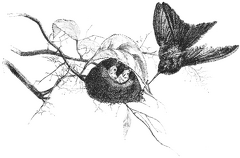 A Clever Humming-bird
A Clever Humming-bird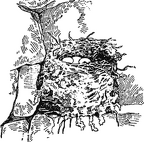 Nest of Phœbe
Nest of Phœbe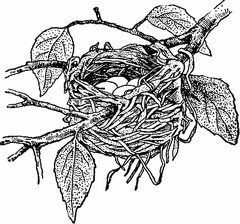 Nest of Red-eyed Vireo
Nest of Red-eyed Vireo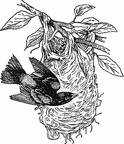 Baltimore Oriole and Nest
Baltimore Oriole and Nest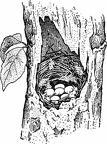 Nest of the Chicadee
Nest of the Chicadee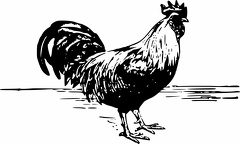 Rooster
Rooster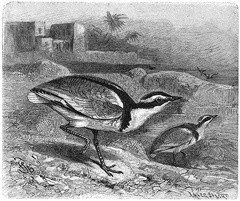 Egyptian Plover (Crocodile Keeper or Crocodile Watcher)
Egyptian Plover (Crocodile Keeper or Crocodile Watcher)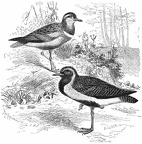 ) Eurasian dotterel ( Charadrius morinellus ) - 2) Plover ( Charadrius pluvialis )
) Eurasian dotterel ( Charadrius morinellus ) - 2) Plover ( Charadrius pluvialis )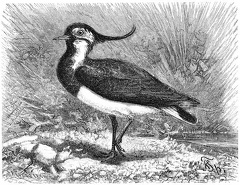 Lapwing ( Vanellus cristatus )
Lapwing ( Vanellus cristatus )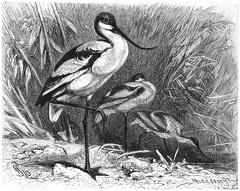 Avocet( Recurvirostra avocetta )
Avocet( Recurvirostra avocetta )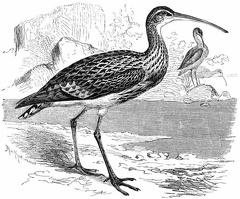 Curlew ( Numenius arquatus )
Curlew ( Numenius arquatus )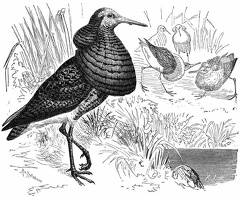 Ruffs ( Machetes pugnax )
Ruffs ( Machetes pugnax ) Nests of Social Weavers
Nests of Social Weavers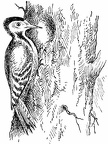 Woodpecker drilling a hole for a nest
Woodpecker drilling a hole for a nest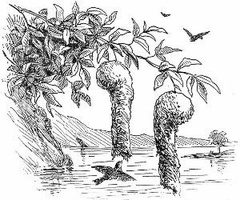 Nests of the Bottle bird
Nests of the Bottle bird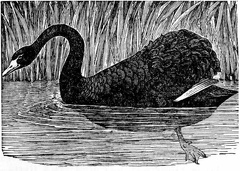 The Black Swan of Australia
The Black Swan of Australia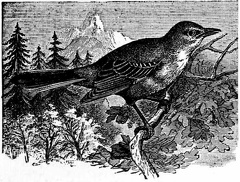 The Mocking Bird. No other Bird has such Versatile Vocal Powers
The Mocking Bird. No other Bird has such Versatile Vocal Powers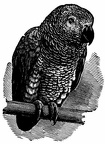 A Gray Parrot on His Perch. Waiting to Speak His Piece
A Gray Parrot on His Perch. Waiting to Speak His Piece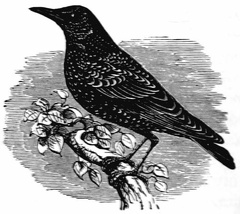 The Starling. One of the Talking Birds
The Starling. One of the Talking Birds A Hooded Peregrine Falcon. Its eyes are covered by the hood until the game is in sight
A Hooded Peregrine Falcon. Its eyes are covered by the hood until the game is in sight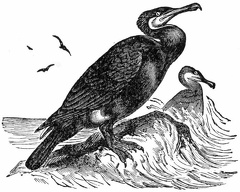 The Cormorant, the Fishing Bird of China
The Cormorant, the Fishing Bird of China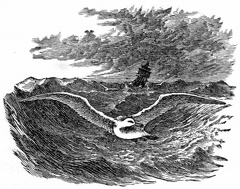 The Albatross swooping over the ocean waves
The Albatross swooping over the ocean waves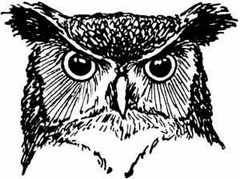 Owl
Owl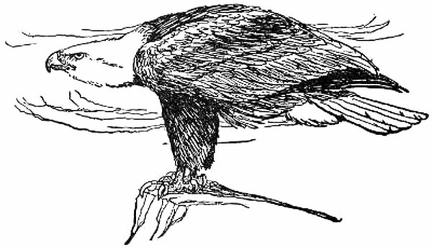 Eagle
Eagle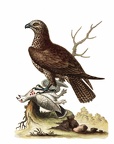 The Ash-Coloured Buzzard
The Ash-Coloured Buzzard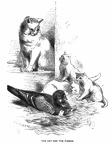 The Cat and the Pigeon
The Cat and the Pigeon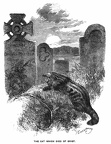 The cat which died of grief
The cat which died of grief Osprey and Grakles
Osprey and Grakles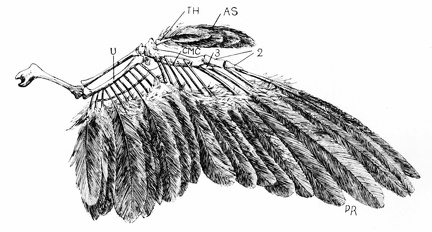 Wing of a Bird, Showing the Arrangement of the Feathers
Wing of a Bird, Showing the Arrangement of the Feathers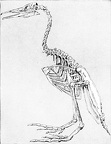 Skeleton of an Extinct Flightless Toothed Bird, Hesperornis
Skeleton of an Extinct Flightless Toothed Bird, Hesperornis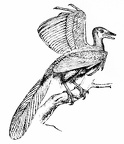 The Archæopteryx
The Archæopteryx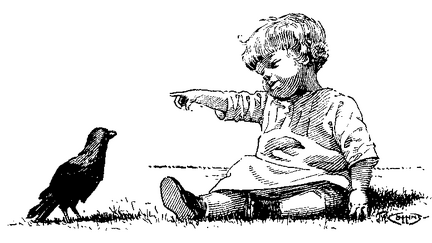 Baby and Blackbird
Baby and Blackbird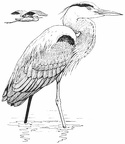 Great Blue Heron
Great Blue Heron American Goldfinch
American Goldfinch American Coot
American Coot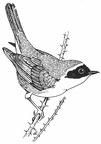 Yellowthroat
Yellowthroat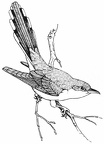 Yellow-billed Cuckoo
Yellow-billed Cuckoo Turkey Vulture
Turkey Vulture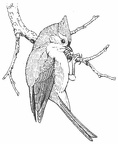 Tufted Titmouse
Tufted Titmouse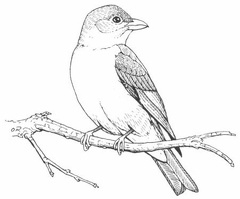 Summer Tanager
Summer Tanager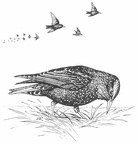 Starling
Starling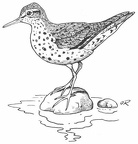 Spotted Sandpiper
Spotted Sandpiper Sparrow Hawk
Sparrow Hawk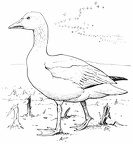 Snow Goose
Snow Goose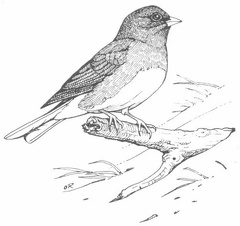 Slate-colored Junco
Slate-colored Junco Screech Owl
Screech Owl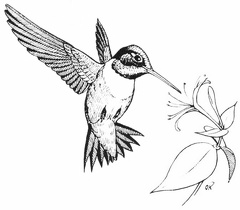 Ruby-throated Hummingbird
Ruby-throated Hummingbird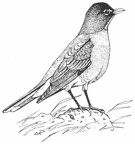 Robin
Robin



